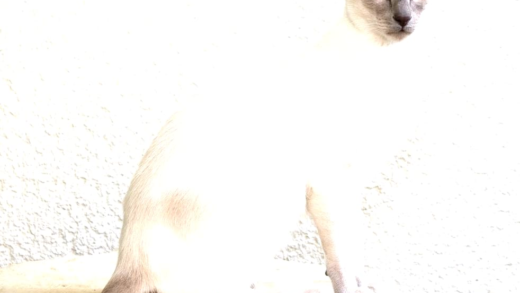Head and Tail Light Tetra thrive in specific tank conditions, needing a temperature range of 72°F to 78°F, a pH of 6.0 to 7.5, and a tank size of at least 20 gallons. Common health issues include Ich and fin rot, which can be managed with proper care. They are peaceful and enjoy the company of other small fish, while interesting facts highlight their vibrant colors and social nature.
What is the Head and Tail Light Tetra?
Head and Tail Light Tetra is a vibrant and attractive freshwater fish that has captured the hearts of aquarists worldwide. Known for its distinctive coloration and lively nature, this fish is a popular choice for both novice and experienced fish keepers. Its bright colors and unique patterns make it a standout in any aquarium setting, adding a splash of life to your underwater world.
Characteristics of the Head and Tail Light Tetra
Head and Tail Light Tetra typically grows to about 1.5 to 2 inches in length. Its body is elongated, with a sleek shape that allows it to swim gracefully. The most notable feature of this fish is its head and tail, which glow with a striking orange hue, contrasted by a silver body. These characteristics make it visually appealing and a favorite among aquarium enthusiasts.
- Size: 1.5 to 2 inches
- Body Shape: Elongated and sleek
- Coloration: Silver body with bright orange head and tail
This tetra is known for its peaceful temperament, making it a great addition to community tanks. It tends to school with others of its kind, creating a lively display in the aquarium. Overall, the Head and Tail Light Tetra is not only beautiful but also a social fish that thrives in groups.
Natural Habitat of the Head and Tail Light Tetra
In the wild, Head and Tail Light Tetra are found in the rivers and streams of South America, particularly in regions of Paraguay and Brazil. They prefer slow-moving waters rich in vegetation, where they can find shelter and food. This natural habitat provides essential elements for their growth and well-being.
- Location: Paraguay and Brazil
- Environment: Slow-moving rivers and streams
- Vegetation: Dense plant cover for shelter
Understanding their natural habitat is crucial for creating an appropriate environment in your aquarium. Mimicking these conditions, such as providing plenty of plants and calm waters, will help ensure the health and happiness of your Head and Tail Light Tetra.
Behavior in an Aquarium Setting
Head and Tail Light Tetra exhibit fascinating behaviors in an aquarium environment. These fish are social creatures, thriving in groups of six or more. Their natural tendency to school not only enhances their confidence but also creates a vibrant display in your tank. You’ll often see them darting around playfully, which adds dynamic movement to your aquarium. They are generally peaceful, making them compatible with various community tank mates.
However, it’s essential to monitor their interactions. They may become shy if housed with overly aggressive species. A well-planned community tank featuring other peaceful fish, like guppies or rasboras, complements their temperament. Here are some key behaviors to note:
- Schooling: Prefer to swim in groups, providing safety in numbers.
- Territoriality: Minimal; they tend to avoid conflict.
- Feeding Response: Actively swim to the surface during feeding time, showcasing their energetic nature.
Providing ample space and hiding spots can reduce stress and enhance their natural behaviors, promoting a healthy and active lifestyle.
Dietary Needs of the Head and Tail Light Tetra
Head and Tail Light Tetra require a balanced diet to maintain their vibrant colors and overall health. These fish are omnivorous, thriving on a mix of high-quality flake foods, pellets, and live or frozen options. A varied diet ensures they receive the necessary nutrients. Here are the dietary essentials:
- Flake Food: A staple diet that should be rich in protein and vitamins.
- Pellets: Sinking or floating pellets can be a great addition.
- Live Food: Offer brine shrimp, daphnia, or bloodworms occasionally to stimulate their appetite and provide variety.
Feeding them two to three times daily in small amounts helps mimic their natural foraging behavior. Overfeeding should be avoided to prevent water quality issues. A well-fed Head and Tail Light Tetra will exhibit vibrant colors and maintain a lively demeanor, essential for a thriving aquarium.
Male vs Female Head and Tail Light Tetra
Distinguishing between male and female Head and Tail Light Tetra can enhance breeding success and improve your aquarium experience. Generally, males tend to be slightly smaller and more colorful than females. Here are some notable differences:
- Size: Males are typically 1.5 inches, while females can grow up to 2 inches.
- Body Shape: Males have a slimmer body compared to the fuller shape of females.
- Coloration: Males display more intense orange hues, especially during breeding.
Understanding these differences not only helps in breeding scenarios but also allows aquarists to appreciate the beauty of both genders. Observing their interactions can also provide insights into their social dynamics within the tank.
Ideal Tank Conditions for Head and Tail Light Tetra
Head and Tail Light Tetra thrive in specific tank conditions that mimic their natural habitat. To keep these vibrant fish healthy, ensure that the aquarium is well-maintained with optimal water parameters. Here are the ideal conditions to consider:
- Water Temperature: Maintain a range between 72°F to 78°F (22°C to 26°C).
- pH Level: A slightly acidic to neutral pH of 6.0 to 7.5 is preferable.
- Water Hardness: Soft to moderately hard water, around 4 to 10 dGH, is ideal.
- Aquarium Size: A tank of at least 20 gallons is recommended for a small school of these tetras.
- Filtration: Use a good filtration system to keep the water clean without creating strong currents.
In addition to water parameters, include plenty of plants and hiding spots to create a comfortable environment. Floating plants can help diffuse light and mimic their natural habitat, enhancing their well-being and colors.
Common Health Issues in Head and Tail Light Tetra
Like all fish, Head and Tail Light Tetra can face health issues if not properly cared for. Awareness of common ailments can help prevent problems and keep your fish healthy. Some frequent health concerns include:
- Ich (White Spot Disease): Look for white spots on the body and fins. Treat with aquarium salt or medication.
- Fin Rot: Caused by poor water quality, this condition manifests as frayed fins. Regular water changes can help prevent it.
- Swim Bladder Disorder: Affected fish may have difficulty swimming. Avoid overfeeding and provide a varied diet to prevent this issue.
Regular tank maintenance and monitoring water quality are essential for preventing these health problems. Early detection and treatment can ensure your Head and Tail Light Tetra live a long, vibrant life.
Community Tank Interaction
Head and Tail Light Tetra are peaceful and social fish, making them excellent candidates for community tanks. They generally coexist well with a variety of other species. Here are some tips for ensuring harmonious interactions:
- Best Tank Mates: Guppies, rasboras, and other small, non-aggressive fish are ideal companions.
- Avoid Aggressive Species: Large or territorial fish can stress the Head and Tail Light Tetra.
- Schooling Behavior: Keep them in groups of at least six to reduce stress and promote natural behavior.
Observing their interactions can be entertaining, as they display social behaviors like schooling and playful darting. A well-planned community tank that considers their needs will lead to a thriving environment for all residents.
Interesting Facts about Head and Tail Light Tetra
Every aquarist should know some fun trivia about the Head and Tail Light Tetra. Here are a few interesting facts:
- Color Changes: Their colors can become more vibrant during breeding periods, showcasing their striking appearance.
- Longevity: With proper care, these fish can live up to 5 years or more in captivity.
- Social Creatures: They thrive in groups, often displaying coordinated swimming patterns, which can be mesmerizing to watch.
These fascinating characteristics make the Head and Tail Light Tetra not just a beautiful addition to your aquarium, but also a delightful fish to observe.



Comments are closed.